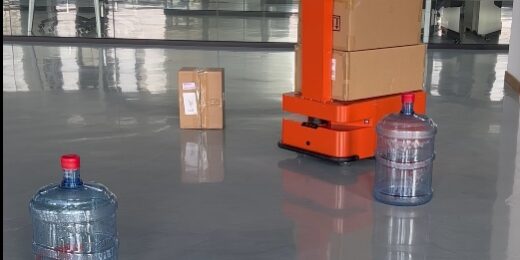As technology advances, AGV (Automated Guided Vehicle) intelligent handling robots are becoming essential in the logistics industry. This article introduces the common classifications and application scenarios of AGV intelligent handling robots, providing an in-depth look at the development of this field.
Common Classifications of AGV Intelligent Handling Robots
AGV robots can be classified based on different characteristics and functions. Here are some common classification methods:
- Classification by Navigation Method:
- Autonomous Navigation AGV: Uses technologies like LiDAR and vision recognition to perceive the environment and plan paths autonomously.
- Magnetic Navigation AGV: Navigates using magnetic markers on the ground, suitable for fixed route scenarios.
- Wire Guidance AGV: Uses a suspended guide wire for navigation, ideal for specific path transportation.
- Classification by Function:
- Transport AGV: Used for material handling and loading/unloading tasks, commonly seen in production lines and warehouse environments.
- Guidance AGV: Helps direct personnel or other vehicles, enhancing transportation safety.
- Inspection AGV: Equipped with sensors to monitor the environment and detect anomalies.
- Classification by Load Type:
- Pallet AGV: Carries palletized goods, suitable for transporting palletized cargo.
- Stacking AGV: Has stacking capabilities, suitable for scenarios requiring high inventory.
- Special Loading AGV: Customized for different types of goods, such as rolls or liquids.
- Classification by Power Source:
- Battery-Powered AGV: Uses batteries, easy to charge, and suitable for indoor environments.
- Wire-Guided AGV: Powered by a guide wire on the ground, suitable for long-term operation scenarios.
- Classification by Size:
- Small AGV: Compact, suitable for narrow spaces or light load scenarios.
- Large AGV: Larger in size, suitable for heavy and large cargo transportation.

Application Scenarios of AGV Intelligent Handling Robots
AGV robots are widely used across various industries and scenarios. Each classification method corresponds to different application scenarios and requirements, allowing enterprises to choose the appropriate AGV robot based on their specific business needs to achieve automation and efficiency improvements. Here are some common application scenarios:
- Manufacturing Industry:
- Production Line Material Handling: Automatically transports raw materials, semi-finished products, and finished products between production lines, improving production efficiency.
- Warehouse Logistics: Automatically transfers finished products from production lines to warehouses or retrieves them from warehouses to the packaging area.
- Warehouse and Logistics:
- Goods Sorting: AGV robots sort goods and deliver them to designated storage areas.
- Rack Access: Automatically retrieves or places goods on high shelves, reducing manual intervention.
- Medical Field:
- Internal Hospital Logistics: Transports medical supplies, medications, etc., from storage to various departments, improving material distribution efficiency.
- Ward Service: Moves beds, medications, food, etc., within medical facilities, reducing the burden on healthcare staff.
- Electronics Industry:
- Semiconductor Production: Automatically transports chips and other products between different processes, ensuring production line continuity.
- Electronics Assembly: Delivers components to assembly workstations automatically, improving assembly efficiency.
- Food and Beverage Industry:
- Restaurant Food Delivery: Automatically delivers meals to designated tables, enhancing restaurant service efficiency.
- Food Factory Material Handling: Transports raw materials from storage to the production line or moves finished products from the production line to the packaging area.
- Retail Industry:
- In-Store Logistics: Moves goods from the warehouse to various sales areas or from the store to the checkout counter.
- E-commerce Warehouse Logistics: Automatically transports goods in e-commerce warehouses, reducing manual handling.
- Automotive Manufacturing:
- Workshop Material Handling: Automatically transports automotive parts within the workshop, improving production efficiency.
- Vehicle Assembly: Delivers components to the vehicle assembly line automatically, reducing manual intervention.
By understanding the common classifications and application scenarios of AGV intelligent handling robots, we can see their extensive applications in different fields. They provide enterprises with more efficient and intelligent logistics solutions, aiding in the development and upgrading of industries.
About Us
CPJ Robot is a global leader in industrial unmanned vehicles and internal logistics automation solutions. By applying core technologies such as 5G communication, artificial intelligence (AI), environmental perception, deep learning, and servo control to the field of industrial unmanned driving, our business spans over 30 countries and regions worldwide.






